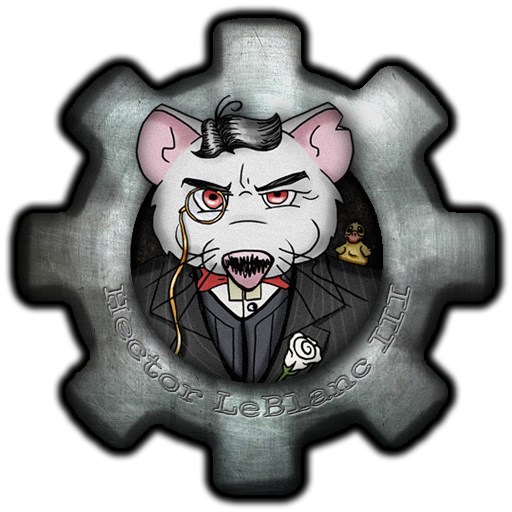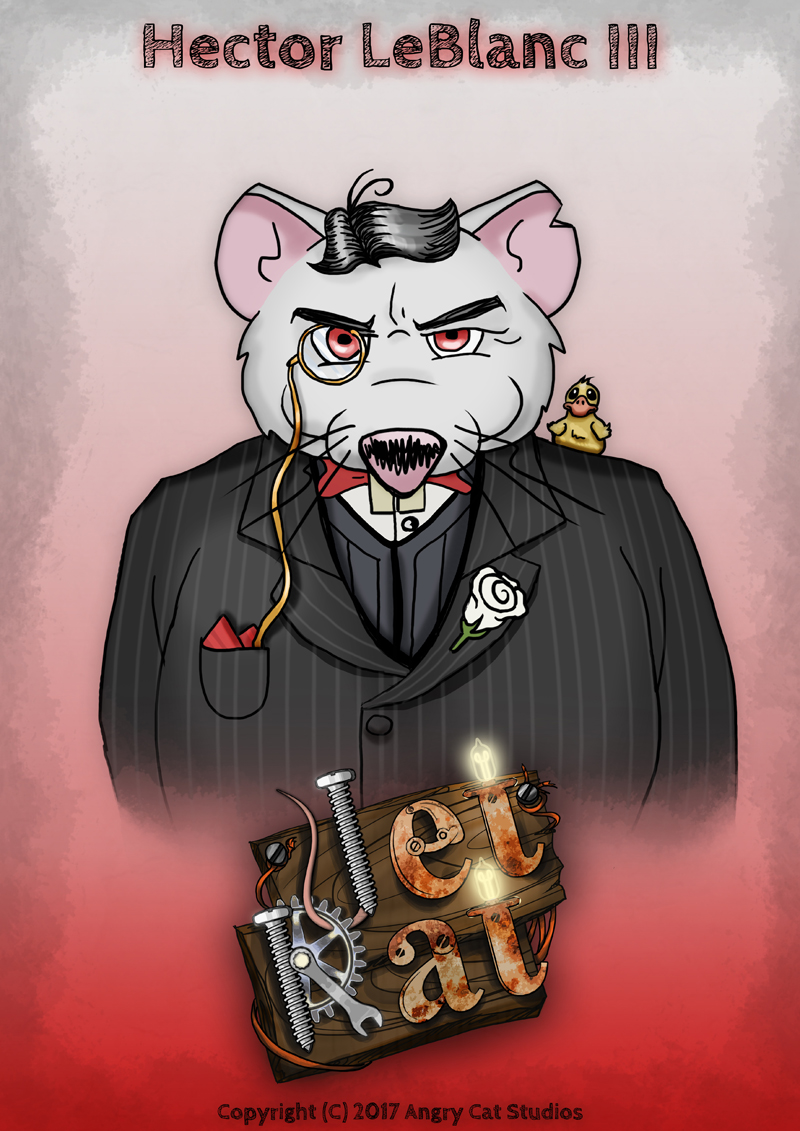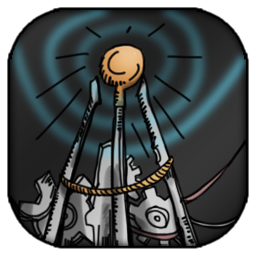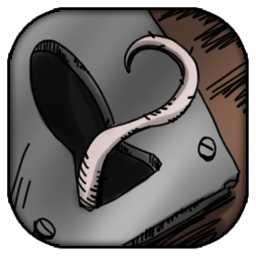 Jet Rat
Jet Rat
Part One
 The ascendancy of Hector LeBlanc from a neglected, unwanted twelfth child to self-appointed Mayor (and common knowledge crime lord) of Ratlantic City is a sad, yet quite edifying story. To truly understand it, we’d have to enter the history of the LeBlanc’s, and that of the City’s long-running political games, and see all the disgraces and greedy mischiefs that happened in generations passed—a lengthy endeavor for another time.
The ascendancy of Hector LeBlanc from a neglected, unwanted twelfth child to self-appointed Mayor (and common knowledge crime lord) of Ratlantic City is a sad, yet quite edifying story. To truly understand it, we’d have to enter the history of the LeBlanc’s, and that of the City’s long-running political games, and see all the disgraces and greedy mischiefs that happened in generations passed—a lengthy endeavor for another time.
But nothing can be said about Hector without speaking about the legendary Artus LeBlanc, the rat who started it all, and the Companionship of the Jet Rats, a tale despised by Hector so deeply that it would hurt to fully comprehend. All historians agree that Artus LeBlanc was real; he lived long generations ago, came from the Bright, taught the primitive original inhabitants of the Sewers how to craft, led them with valor, and protected the young City from the ever-lurking dangers—from his nemesis, the horrendous White Rat-Snatcher in particular. Artus was clearly divine; he had white fur and red eyes, signs of being touched by higher powers (yet he was so humble he always referred to himself as “just an albino”. EDIT: some extremist religious groups speculate that the Rat-Snatcher was also an “albino”, thus Artus was not divine, rather diabolical, or a mere messenger of the Ratnarök/1/ to come.)
His closest disciples were called the “Jet Rats”, a group of brave, idealistic fellows who dedicated their lives to understanding and exploiting the wonders of “Technology” (an archaic word with the meaning of both gadgeteering and machineering) in an effort to make the Sewers a better place. With success, we might most definitely add. Artus also had two sons, named Hector and Algernon, who would carry on his legacy, but only Algernon inherited the divine touch (EDIT: was also an albino), and however equally Artus raised the two, they had serious conflicts with each other in their adult lives, that reached the apex after the departure* of their father. (*: he literally disappeared one day, “going on a last expedition”—according to some sources.) Hector openly confronted the guidance and tutelage of the Jet Rats with a more “civil” approach on rule, and urged the establishment of an independent City Council, while the Companionship itself was step-by-step reduced to a mere instrument of defense and maintenance. Many members of the first Council were also Jet Rats, trying to strike a balance between tradition and innovation, but this changed during the upcoming generations, and in the end, the Companionship became nothing more than a small secret group operating from behind to upkeep the original ideals of Artus. Among the general population, they were always and still more loved and idolized than disliked or hated (*RCA S.418), but the need for free commerce and the uncensored flow of ideas outweighed their principles from the beginning in particular groups with the “greatest influence” (*RCA S.421).
Now on to our dearest Hector III! Many generations had passed, and we’re in an era where the Jet Rats are just like a folk tale, commerce rules all, and money is god: the City has seriously outgrown itself, and without the expertise of the Companionship, electricity and clear water run short to fully support the blooming population. The influence of Ratlantic City reaches out to every corner of the Sewers, market regulations are easily enforced by the volume of trade alone—wherever you live, you must abide by the City’s rules or starve. Only the wealthy can afford a place in the Hanging City, and only the privileged and richest can enter the City of Light. Walter LeBlanc is Mayor: a distant descendant of Hector LeBlanc I, master merchant, computing and heartless. But, at least, he has a good eye for details: he keeps piracy and black marketing at bay, if not for the sake of the City, but for the sake of himself. He also understands the power the poor masses have (*though he calls it “demand”), and plays the occasional benefactor just to keep the peace and things running. A few members of the City Council, however improbable, continuously fight for better education and healthcare: their pleas, though not often, but sometimes still accepted. Even among the poorest, average life expectancy and quality of life in the City is almost twice as high as outside the walls (*RSI S.2017-361). (EDIT: crime rate is at least tenfold as high as outside the walls, but this is not made public.) The City is prospering. There’s only one tiny problem: the Works are on the verge of collapse, the number and proficiency of mechanics is not remotely enough to maintain the system. It’s being kept a grave secret.
Walter LeBlanc has many children. Not that he likes having them, but they keep coming as a side effect of one of his most loved passions, women. And with no one around to truly trust, good Walter decides to take them all (EDIT: sons only) under his name, give them a proper raising with a proper enough education so that one day one of them may become his successor. Further, though, he does not care—he’s in favor of an “open competition”. We can’t say he’s thoroughly content with the contenders, to tell the truth. And then, when least anticipated, a miracle happens: another son, an albino is born! Nobody has seen a real albino in the family since ages. Walter is dazzled, but struggling with his long-suppressed feelings: he’s descendant of Hector I, who fought his albino brother in his whole life. All the troubles the “Jet Rats” have ever caused were on the ideals of an albino. He can’t accept this son. He won’t. But he loves the mother; she is the first woman he ever really cared about. And so, he lets her keep the baby, even lets her name him Hector (*”Maybe the name will inspire him not to adapt some heathen albino attitude”—contributed to W. LeBlanc, RHA C.9236.) What a life awaits this poor, fragile, little white thing!
To be continued... (promise!)
-----
Notes:
/1/ (the) Ratnarök: early religious concept about the end of the world held by immigrants of the Rattus Norvegicus sub-race. According to this belief, a giant, demonic feline called Furrir will devour the world as a punishment for all crimes committed, only survived by innocent gods and the spirits of the greatest, most noble heroes accepted into the Rathalla (Rat-hole in old form.) (RCA S.9)
EDIT: ancient Nordic rats supposedly adapted this concept from the furless Giants whom they shared accommodation with on the ships during crossing the Great Water; the original concept may be a bit more complex. (RCA S.9-4B) Also, some of our more advanced ship-building techniques may originate from them. (RCA S.9-12)
-----
Abbreviations:
RCA – Ratlantic City Academy; S.# - study
RHA – Ratlantic City Historic Archives (Dept. of RCA); C.# - cat. No.
RSI – Ratlantic City Statistical Institute (Dept. of City Council); S.# - survey
Art









